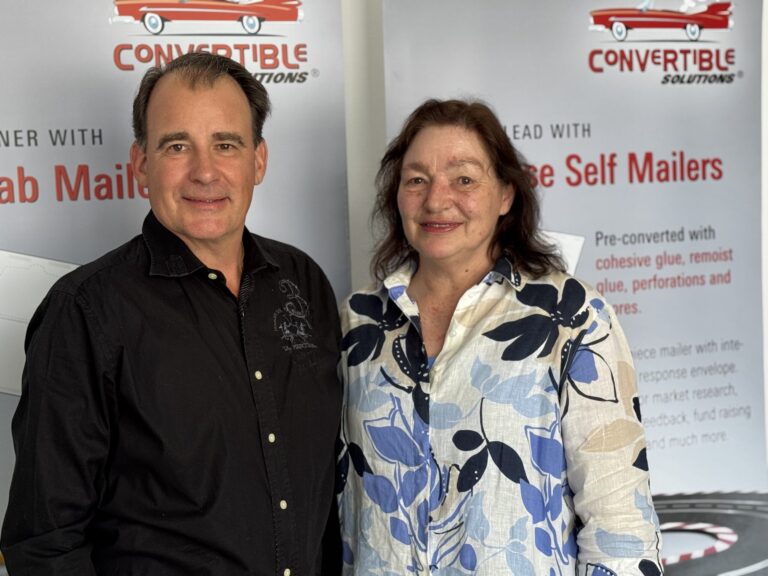
David Williams presents at the International Business Forum
An arousing presentation titled Creativity in Business Development was given by David Williams recently in Chicago during Print13 at the International Business Forum.
He began with … Are You an Artist?
Hallmark artist and author Gordon Mackenzie asked the question of children in elementary schools when he visited to demonstrate his art of sculpture. First graders jumped up and enthusiastically proclaimed themselves to be artists. When asked of fifth and sixth graders only one or two of them admitted to being an artist. David encourages each of us to embrace our inner artist when approaching new business opportunities.
We live in an age of creativity; people who don’t create unique value will miss out on opportunities. Each person has to find their unique talent and develop it; we can learn from each other while we discover our own creativity, specifically, creativity in business model development.
Your business model is broken. Or it soon will be. He makes that statement with confidence because business models become obsolete and today’s rapid rate of social and technical change means business has to evolve more quickly.
Peter Druker described a business model as the answer to three questions:
Who is your customer? What does your customer value? How do you deliver value to that customer at the appropriate cost? In other words, it’s what you do, who you do it for, and how you do it. When you make a change to any of these areas, you are implementing business model innovation.
David discussed business cycles and 3D printing specifically. Many aren’t aware of the products existence yet. 3D printing is an example of a business model in the introduction stage. An example of a business model in the growth stage is the selling of photo books and photo gifts online. Selling of digital cameras through big box retailers is in the mature stage of the business cycle. Successful companies develop, test and introduce new business models continuously to keep the business growing.
David suggests we look at a few companies that have evolved new business models recently. Blurb’s founder and CEO Eileen Gittins followed her passion. She was a photography enthusiast who decided to photograph each of her friends doing something important to them. Eileen says that “Stories are a collective memory of who we are at a point in time.” She decided to assemble the pictures and stories into a book, but found the personalized publishing options available at the time to be lacking. She wanted to make a “book of great beauty, a real book like you would buy in a bookstore.” She decided to turn her idea into a business and took the courageous step of quitting her job and spending months presenting her concept to the venture capital community, eventually securing $2 million dollars in funding. Her team launched the site and generated $900K in revenue in the first six months. According to Gittins, they had “tapped into the passion of people wanting to share and tell their stories.” Blurb has succeeded because of the vision and persistence of Eileen Gittins and the ongoing dedication of the Blurb team. The ‘artist’ in her evolved!
Leverage a core competency as the company Eric Scott did to enter a new business. In 2007, the private label manufacturing company identified a big problem. Eric Scott’s specialty is making high quality leather products and about 80% of their revenue came from the financial services industry. They make exceptional checkbook covers. However, fewer people are using checks. The drop in this business accelerated in 2009 and beyond. Fortunately, Eric Scott understood manufacturing high quality leather goods; they also had developed an image upload method to have the image printed on a leather checkbook cover. So they began to explore opportunities in photo gifting. In 2008 they developed a beautiful new line of genuine leather photo gifts.
Dana Viox, Eric Scott’s Vice President of Business Development, told David that the process of change was challenging but fun. Going from making large quantities of each item to manufacturing units of one required many changes. But it was also exciting to “get in on the ground floor of an industry that is evolving and growing so rapidly.”
David ponders … What are your company’s core competencies? Are you an artist? How could you use these skills to develop new business opportunity? His presentation went on to point out a variety of companies that have been creative with their business model.
Convertible Solutions built on an internal process when they created their original line of Fold ‘N Go products. Pinhole Press found a group with an unmet need, generally the wedding photographer. They designed a new web business model while providing a unique incentive to a new channel partner. Scott Crump, of Stratasys, developed Fused Deposition Modeling, or 3D printing, which was born out of Scott’s desire for a new solution to an old problem.
In this summary of David’s presentation we won’t “dive deep” into the IDE3A process which is Investigate, Define, Explore, Experiment, Evaluate and Amaze. We will ask two questions … What ideas are you exploring that could benefit from the IDE3A process? How will you make them amazing?
His final area to explore in the presentation was in regard to finding new ideas. According the Lemaitre’s Big Bang Theory, everything that has been created or will be created contains components from that original event. Ideas fit that same model. Great new ideas result from combining existing ideas into new forms. When you approach a new design challenge, your solution will be pulled from your knowledge and experience. When those experiences are broader and deeper, you are able to blend them together in more innovative ways.
Today, that means books and blogs.
Blogs, Twitter, Facebook, LinkedIn and other social networking sites make it easy and fun to follow the most innovative thinkers in any field. People who are intellectually curious have a talent for finding interesting information and sharing it.
Books in the internet age … books still have great value…
- Books don’t have to be recharged
- You don’t have to turn books off for takeoffs and landings
- If you lose a book, you don’t have to change all of your passwords
- You can fold the page corners to mark the best parts
- You can underline passages and write in the margins
- You can loan a book to a friend legally
- Books make great office décor
Really though, paper and binding isn’t what David likes most about books.
The advantage of a well written book is the depth that it can bring to a subject. In addition, the process of writing and editing a book gives authors more opportunity to refine their thoughts and presentation. Whether you prefer hardbacks, paperbacks, a Kindle or an iPad, find time to read more books. Through books, blogs, and events, you will soon have more ideas than you can handle.
Ideas are like Chili – They Need to Simmer. Evaluating ideas is like the simmering chili. The brain needs time to synthesize all of the inputs and connect the dots in a new and unique way. After the initial research, brainstorming sessions, reviewing flowcharts and process documents, take a break. You need to allow the information to sink deep into your unconscious and simmer for a while. According to David, “Your brain does its best work in quiet obscurity while you are concentrating on something else.”
Jane Smiley tells a story about the night John Atansoff invented the first electronic computer while having a drink in a roadhouse, he jotted his notes on a cocktail napkin. Atansoff had been working on concepts for the machine for years and on that night in December 1937, he was frustrated and baffled. So he jumped in his car and drove from his office across the flatlands of central Iowa, through the rolling hills of eastern Iowa, crossed the Mississippi river and stopped for a drink in Rock Island.
The concentration of driving and the change of scenery kept Atansoff’s mind off of the problems of computational design. But his unconscious mind was free to explore ideas in depth. As soon as he sat down in that roadhouse, all four of the key design features of the system came to him at once. He sketched his ideas on his napkin, finished his drink, drove back home and began the long process of putting his ideas into action.
That is a beautiful example of how allowing an idea to simmer can lead to a breakthrough.
An unforgettable summer job is another example. Carl Decker invents selective laser sintering. In the summer of 1981, Carl recognized the need for a method to automatically create castings from CAD drawings while working a summer job in a machine shop near Houston. He began thinking of ways it could be done, he worked on the idea for the next three years and by the time he was ready to graduate, in 1984, he had developed the idea of using a beam of energy, such as a laser, to melt particles into a solid 3D object, developing the Selective Laser Sintering process.
SLS and the FDM process mentioned earlier are the two 3D printing technologies that are transforming manufacturing. Like Atansoff’s road trip, Decker’s summer job, or the simmering chili, we need to give our ideas time and space to develop. Do the hard work first. Then relax for a while and let your mind work in peace.
Please complete the following for access to the free download of the Powerpoint presentation:[email-download download_id=”3884″ contact_form_id=”3867″]
If you would like to exchange ideas with David, his email address is Dave@BlackRiverImaging.com







